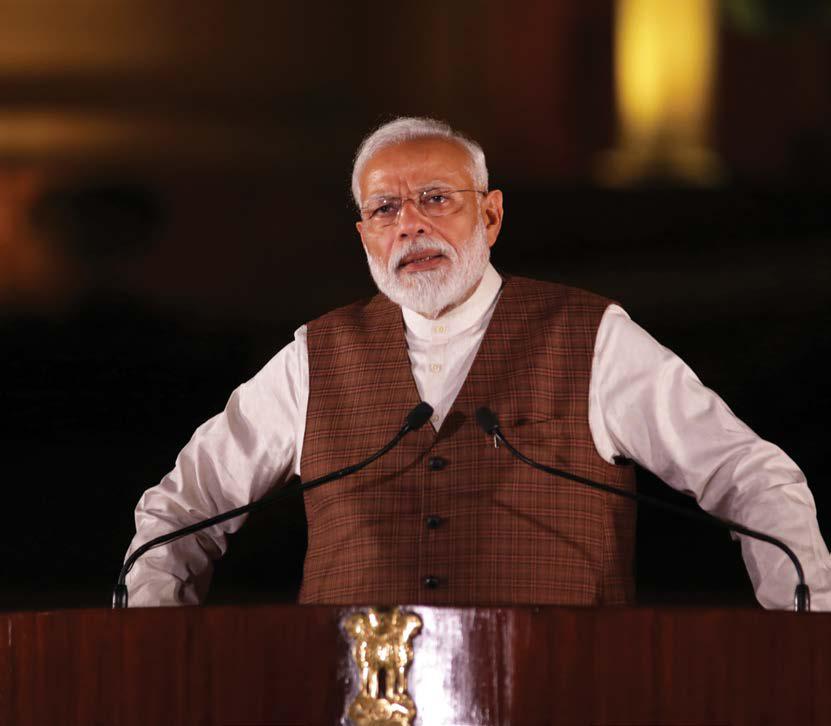Indian real estate gets dose of reforms for increased transparency
India’s notoriously graft-prone real estate sector is growing more transparent, thanks to government regulations and the introduction of REIT frameworks

A decade is a long time in real estate. In late 2011, the New Delhi-based Liberty Institute calculated that Indian land transactions generated up to USD40bn of illegal money each year — then equal to 2 percent of GDP — and the country ranked a lowly 94 out of 176 nations in Transparency International’s Corruption Perception Index.
Yet less than 10 years on, the pall has been pulled off India’s shadowy real estate sector, suggesting a golden era of transparency for homeowners and institutional investors.
This newfound optimism was enhanced last year with the release of JLL’s latest Global Real Estate Transparency Index. Registering one of the largest improvements worldwide, India’s real estate industry ranked 34th, up from 142 in 2014, surpassing nations including the United Arab Emirates, Russia and Brazil. This is a marked improvement for a country in which real estate might as well have been a byword for corruption.
High-profile scandals and small-scale backhanders have long blighted the industry to the extent that graft at every level was not only tolerated but anticipated.
“Once the developer gets the land, a feeding frenzy starts, often with court cases to stop the project,” says best-selling author and economist Monika Halan explaining how graft has worked in the past. “The builder then has to pay off the noisemakers or wait for the glacial judiciary until he runs out of money. The next round of feeding happens with those who hold the stamps of approval for the many clearances a project requires.
“The builder and politician, or families of politicians, gouge enough out of the project so that builders won’t make any money unless they price it a certain rate.”
Indeed, a slew of prominent cases in recent years has revealed just how deep the rot allegedly runs within India’s upper echelons. Such scandals tend to fall into two categories: default on large sums of money borrowed from banks and deviations or favouritism in awarding land or licences. In 2011 and again in 2013, Robert Vadra, the husband of Indian National Congress scion Priyanka Gandhi, became embroiled in accusations—which remain under investigation—of the latter, with claims he traded influence with then-Congress-ruled states for favourable loans and land deals from DLF, one of the country’s largest commercial real estate developers.
The recent scandal involving top officials at Punjab and Maharashtra Co-operative Bank and construction firm Housing Development and Infrastructure Ltd (HDIL) also exposed the shady relationship between India’s finance and real estate sectors. In 2019, the bank’s former managing director Joy Thomas admitted to hoodwinking the auditors, bank’s board, and Reserve Bank of India for years by concealing the default on loans to the tune of INR6,500 crore ($885.3 million) taken by HDIL due to “fear of reputational loss”.
Industry experts, however, note that visibility within the sector is finally improving, thanks to a raft of recent government reforms.
RERA has been a gamechanger for the industry, particularly for the consumer. It has given a voice to the consumer on the previously one-sided and high-handed approach of the developers who, for the first time, have been made accountable
“India has seen a steady improvement in the Global Transparency Index over the years,” says Ramesh Nair, CEO and country head of JLL India. “In fact, along with Indonesia, Philippines and Vietnam, we are among the handful of countries that have seen the highest improvement owing to positive governmental support and an enhanced ecosystem of transparency.”
Government support has come in the form of a series of sweeping regulations implemented by Narendra Modi’s administration in recent years. The Real Estate Regulation and Development Act (RERA), passed in 2016, has done much to advance transparency and rationalise the chaotic sector. The main agenda of the act is to protect the interest of the homebuyers by bringing in transparency and accountability between the developer and the end user via a standard, uniform regulatory approach across the nation.
“RERA has been a game-changer for the industry, particularly for the consumer,” explains Amit Khanna, managing director of property consultancy Phoenix Advisers and jury chairperson of PropertyGuru Asia Property Awards (India). “It has given a voice to the consumer on the previously one-sided and high-handed approach of the developers who, for the first time, have been made accountable.”
He adds that developers can, for instance, no longer take the funds raised from customers of one project to buy land for another, previously a common tactic. They can also be fined for failing to meet delivery timelines and are unable to make sou moto changes to a project without majority consent from investors.

Another key contributor towards improved transparency was the 2019 introduction of the country’s first real estate investment trust (REIT) framework. Regulated by the Securities and Exchange Board of India and structured on the lines of mutual funds, REITs carry a further layer of governance over and above those of the real estate sector. They also provide an avenue for liquidity and fractional ownership of institutional-grade portfolios, which is already attracting greater interest from institutional investors.
In October, for example, RMZ Corp, a privately owned owner and operator of realty assets, sold its commercial portfolio to Brookfield Asset Management for $2bn, while US equity firm Blackstone Group finalised a deal to buy Bengaluru-based real estate player Prestige Estate’s commercial assets for an estimated $1.5bn. These are two of the biggest real estate transactions in India’s history—and occurred amidst the global pandemic.
Covid-19 has inevitably wreaked havoc on many corners of the country’s real estate sector. Still, it may prove to be a catalytic blessing in disguise for further driving transparency. Although the property market has historically faced challenges when implementing new technology, diminishing transactions and lack of physical site visits during the lockdown, amongst other factors, mean digitalisation and innovative use of technology have been fast-tracked, with developers, designers, construction firms and government agencies quick to embrace proptech in 2020.
New types of non-standard and high-frequency data—especially relating to health, mobility and space usage—are now being collected and disseminated in near-real-time. According to Khanna, the time taken to approve construction maps in the National Capital Region, which previously took anywhere between several months to years to complete, has been dramatically reduced, while the licencing regime is now far more transparent due to live online reporting and disclosures.
“It has also helped to considerably reduce corruption,” he says. “The more digitalised we become, the greater the trail is and the easier it becomes for people to access and recognise vital information.”
Over the next 10 years, the acceleration and uptake of proptech and digitalisation, supported by a strong framework of REITs and effectively implemented government regulations, could pave the way for a seismic shift in India’s most mired industry. But for the timebeing at least, it remains a case of wait-and-see—a decade is, after all, a long time in real estate.
This original version of this article appeared in Issue No. 164 of PropertyGuru Property Report Magazine
Recommended
Why everyone is moving to Selangor and Johor: Malaysia’s real estate comeback
Malaysia’s upturn in fortunes is especially prevalent in secondary destinations such as Selangor and Johor
Penang’s silicon boom: How the US-China tech war is supercharging local real estate
Penang’s booming semiconductor industry has created ripples within the local real estate sector
New leader, new opportunities: How Hun Manet is shaking up Cambodia’s real estate game
Hun Manet is overseeing decent economic growth and widening access to the country’s real estate market for foreigners
Singapore embraces inclusive housing reforms amid resilient demand
The Lion City’s regulatory strength continues to exert appeal for international investors








